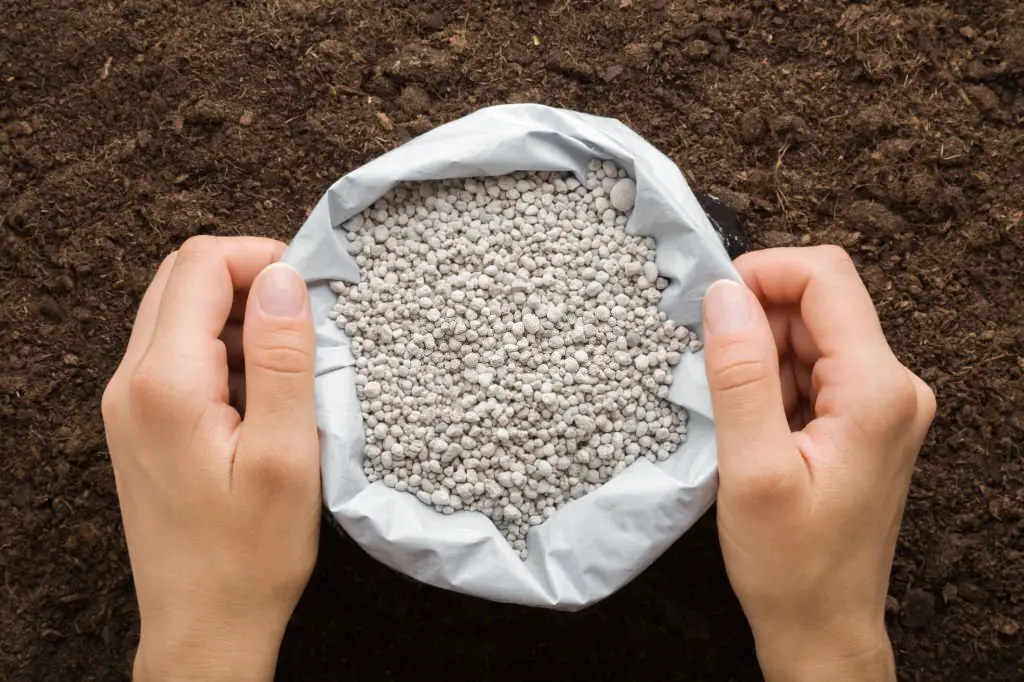Last Updated on April 12, 2024 by Real Men Sow
Do you need to purchase a new bag each spring of fertilizer for your garden plants, even if last year’s was sufficient? Most gardeners will wonder if fertilizer goes bad at some point. There are many ways to store fertilizer effectively so it remains viable throughout the year.
A fertilizer package may not include an expiration date. So does fertilizer go bad? As long as fertilizer is stored correctly, it won’t go bad. When it seems like the gardening chores have finished, remember to store any fertilizer left over. You should also be aware of potential problems when using the same fertilizer next year.
Different Types of Fertilizers and their Expiry
It is important to consider the composition of different fertilizers in order to determine whether they can be used for multiple seasons and how long they will last.

Benefits When You Store Fertilizers Properly
So why go through storing leftover fertilizer and use it next spring when brand new packages are available to purchase at the store?
- It saves money – If you don’t spend money to buy new feed every growing season, it means you can save up.
- Reduces fertilizer waste – Organic fertilizers do no harm to the environment, but Chemical Fertilizers are. Using the leftovers from the previous growing season helps reduce fertilizer waste.
How To Store Fertilizers Efficiently
If your fertilizer is free from pesticides or herbicides, it can be stored for a year after the growing season. However, it is important to store the fertilizer properly if you intend on reusing them. These are some tips that will help you ensure it lasts.
1. Location
It’s best to find a cool and dry spot to store your unused fertilizer. The place should also be enclosed, therefore, protected from direct sunlight and weather extremities. Keep in mind that you cannot store them with pesticides and other chemicals. Also, don’t let dust and dirt build-up, therefore, you should clean the area. Rainwater or moisture would make the fertilizer lumpy and would result in you not being able to spread it.
2. Container
You can just leave the fertilizer in the container it came with, given that it’s not damaged. This would not only remind you that it’s fertilizer, you’ll also be able to keep track of the labels that came with it.
However, if the original packaging is damaged, it’s best to transfer it to a different container where you can add the essential information from the label. The container should be stored upright and should be placed over a shelf to prevent damage and moisture.
3. Seal it
If you’re only just opening the fertilizer package, please use scissors or a utility knife to prevent damage to the packaging. Seal the leftover fertilizer and make sure you protect it from dust and moisture.
4. Prevent liquid fertilizer from freezing
Don’t leave liquid fertilizers someplace where they can freeze easily during winter.
5. Store Fertilizers away from children and pets
Many fertilizers can be toxic. If pets or children are present, store it safely. Keep it safe by placing it in a metal container inside your garage.
Which Should You Use, Liquid fertilizer or Dry fertilizer?
We’ve seen the differences in shelf life between these fertilizer types. Let’s look at some other characteristics and decide which one is better.
- Accessibility To The Roots – Nutrients such as phosphorus are not very mobile and cannot be reached by the roots easily if they’re added through dry fertilizer. However, the soil absorbs the liquid fertilizers which would make the nutrients more accessible to the roots.
- Uniformity – Liquid fertilizer’s nutritional composition is identical all throughout, meanwhile, dry fertilizer is in the form of granules which corresponds to separate nutrients.
- Price – Dry fertilizers are cheaper than liquid fertilizers.
- Starter Application – Liquid fertilizer is used as a starter application because of its uniformity. Meanwhile, dry fertilizers can be too “hot” for the initial stages of seed development.
- Slow-release – There are slow-release options for dry fertilizers, meanwhile, liquid fertilizers don’t. Most gardeners prefer slow-release fertilizers because it nourishes the soil over time.
- Sedimentation – Minerals often settle at the bottom of the container after long periods of storage for liquid fertilizers. This is why you should shake the container before use.
What Can You Do With an Old and Clumpy Fertilizer?
There is no need to panic if the fertilizer bag from last spring has become partially used. The problem could be due to moisture absorption from improper storage. However, it is not a major problem. You can break it up with your hands or hammer it into granules. You can use old, clumpy fertilizer on flowers and vegetables as usual.
While dry fertilizer granules clump, you can prevent it by sealing the bag properly. The granules clump together due to moisture in the air. It will remain fresh and grainy season after season as long as there is no exposure to air.


